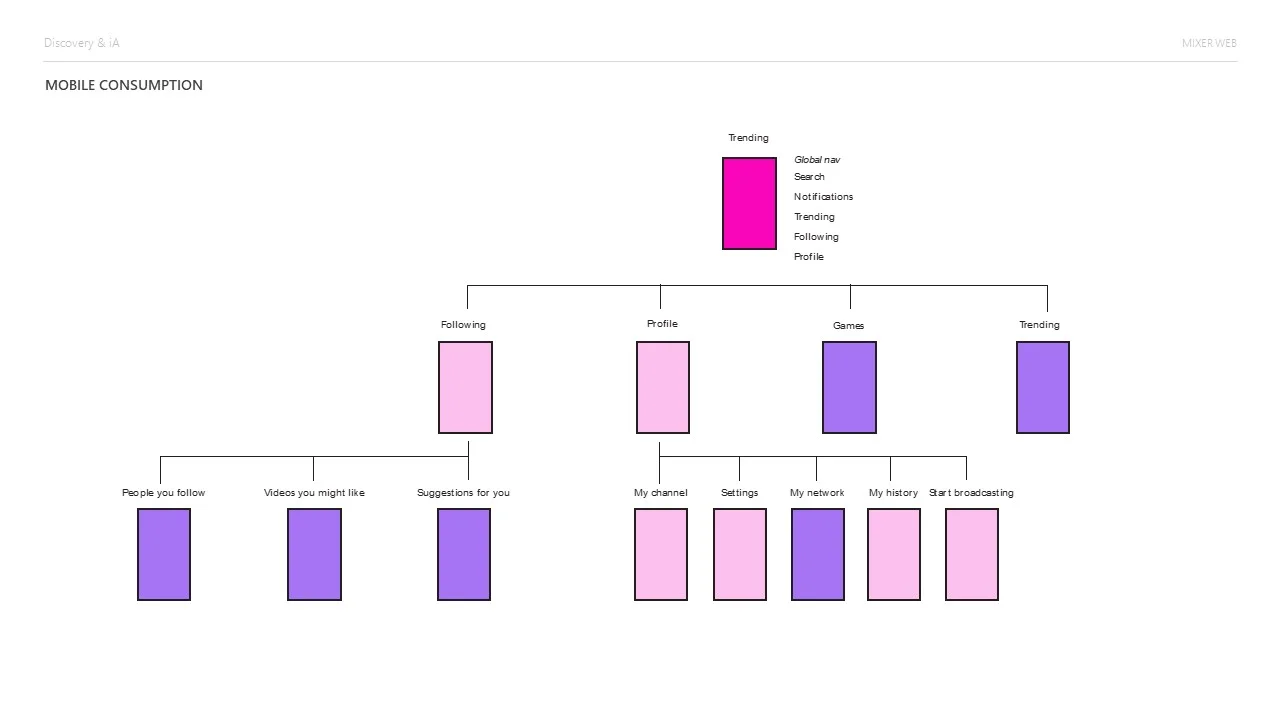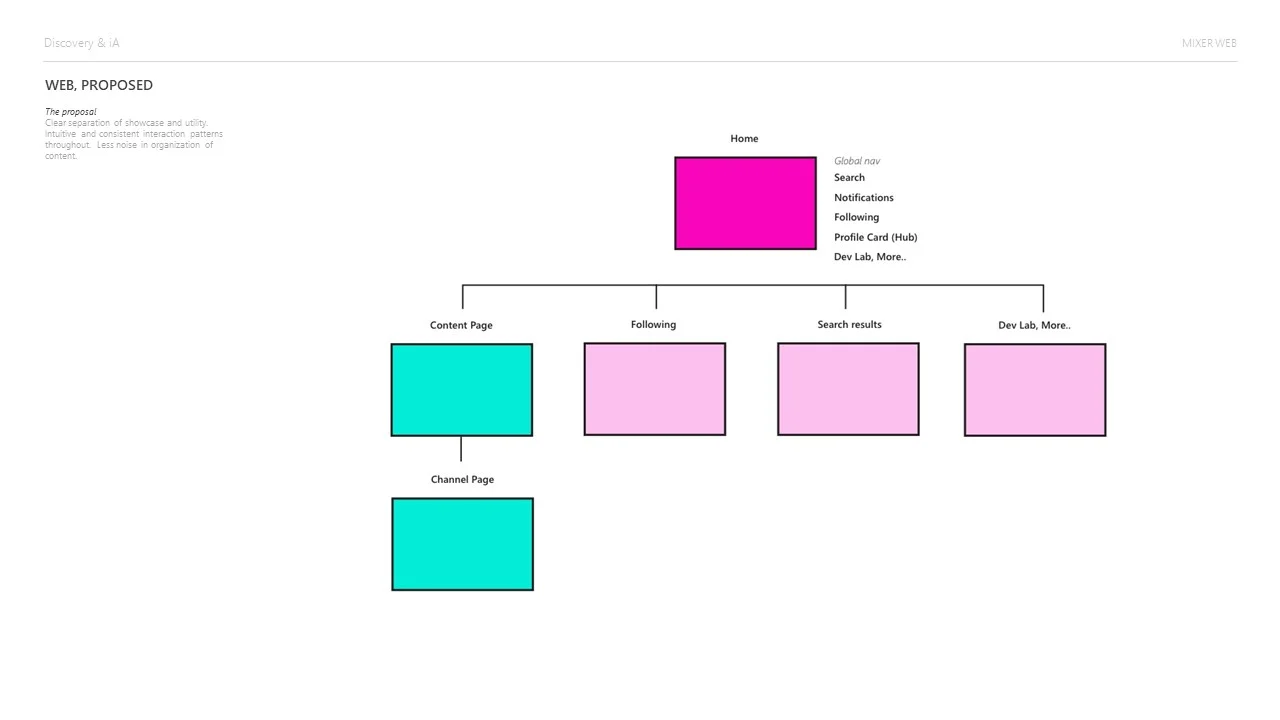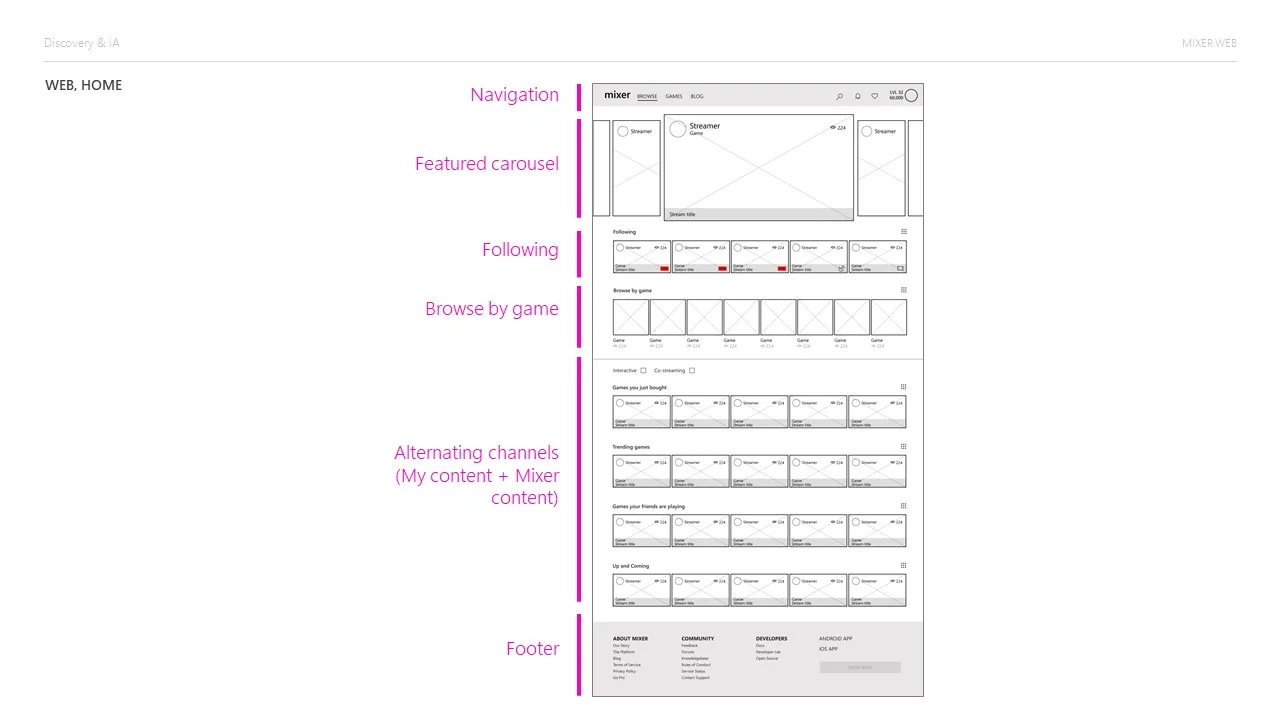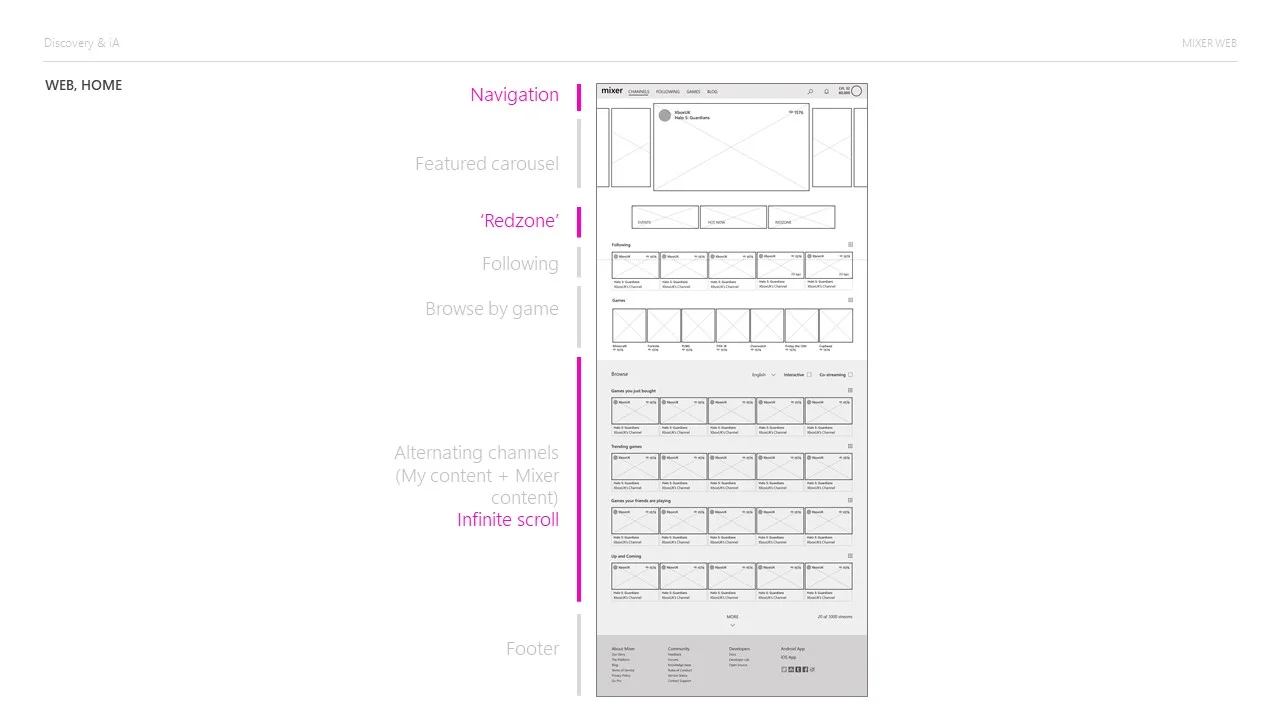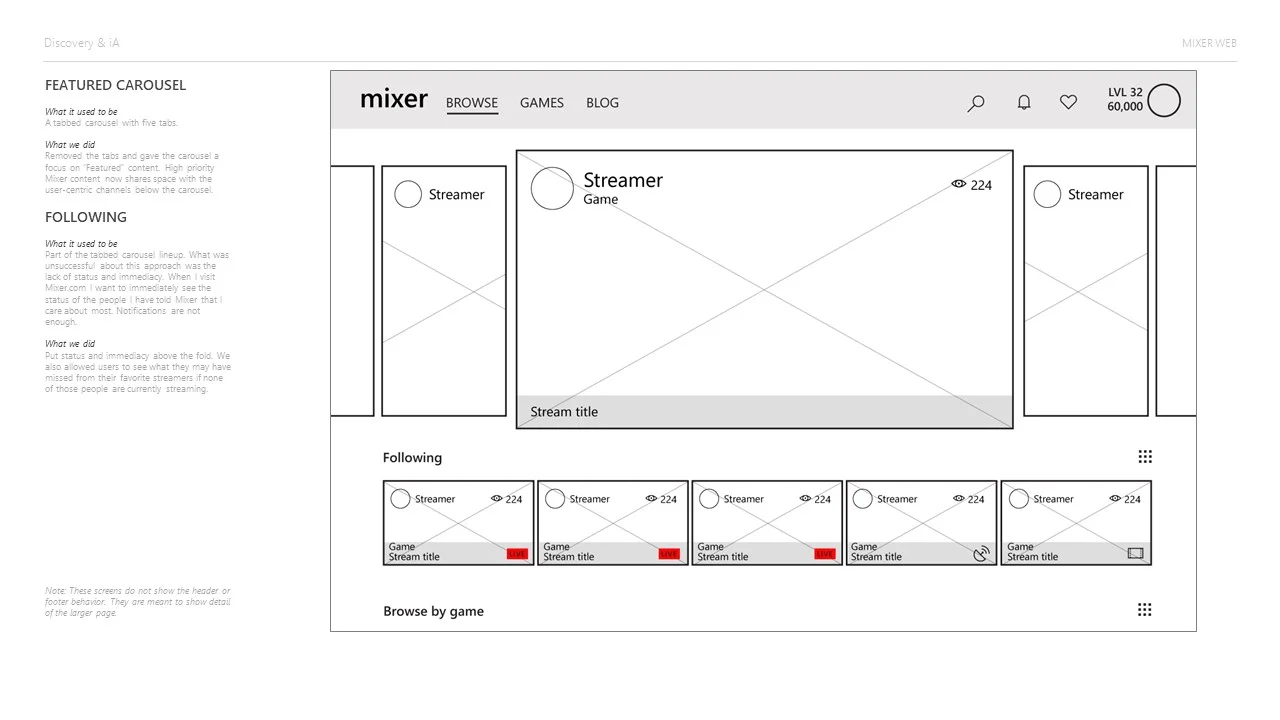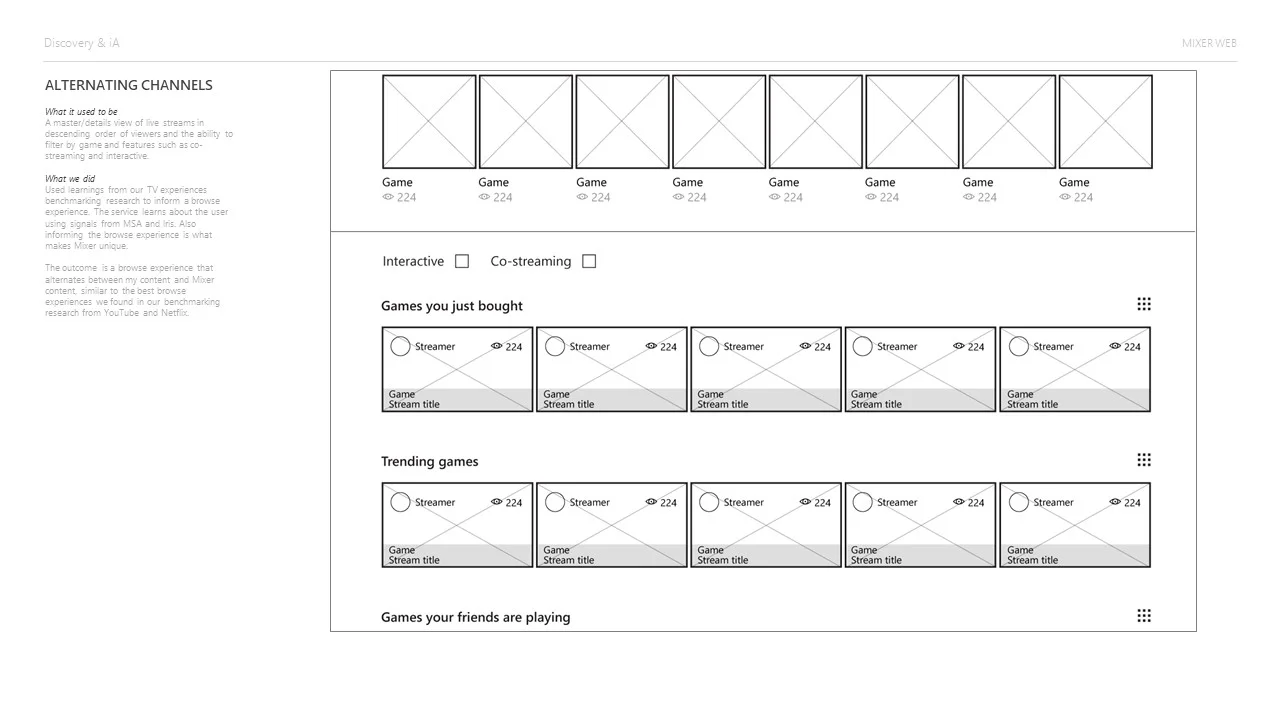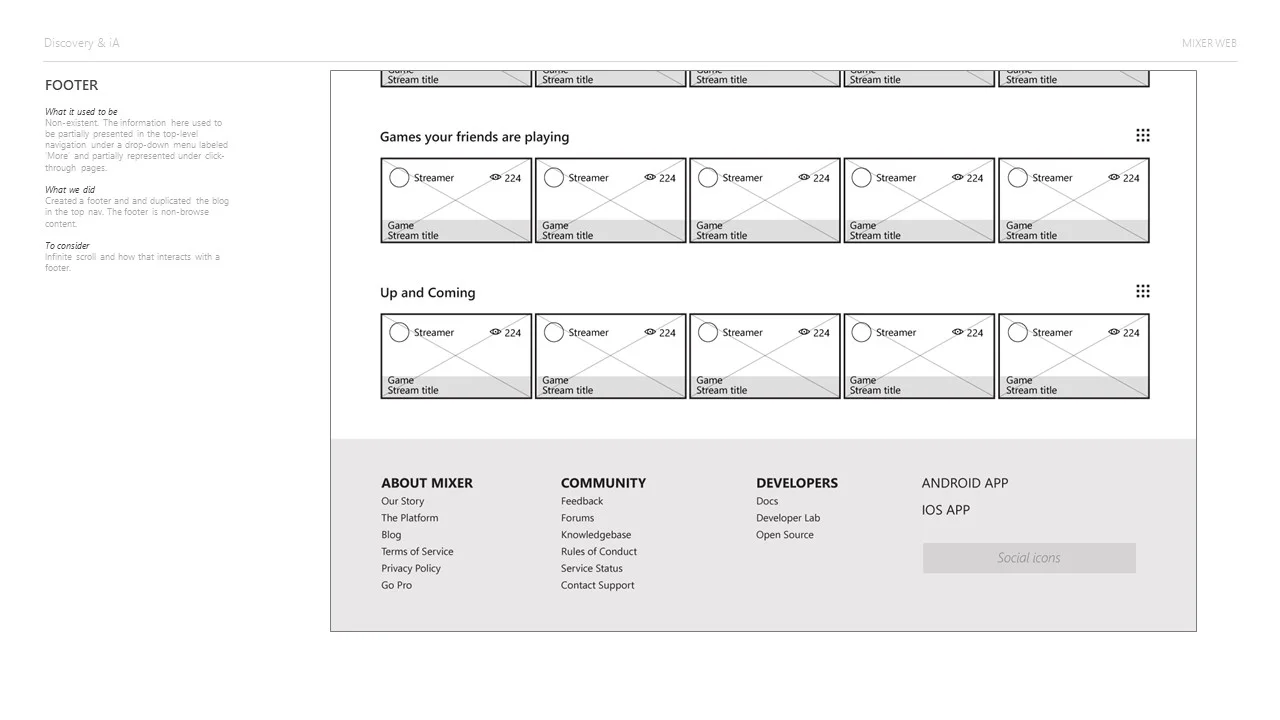Mixer Web Discovery & Information Architecture
WHY IS THIS IMPORTANT?
The Mixer mission is to bring streamers and viewers together with the world's fastest and only interactive streaming platform. With streaming becoming more ubiquitious and viewers contending with burden of choice, differentiation is key in the marketplace. Mixer already has some incredible programs and more on the horizon. Rethinking the site and beyond provides the foundation to support growth and position the product uniquely within the streaming space.
THE TEAM & deliverables
We had a three person design team: A design studio lead, a visual designer and I focused on interaction and visual design. I worked with a larger team but personally contributed mapping information architecture and discovery, creating user flows, wireframes, visuals, high-fidelity prototypes and presentations.
Mixer architecture across platforms: mobile app, console and web (current) and web (proposed)
PROCESS
Over the course of four months, we collaborated with Xbox product management and Mixer programming teams all the way to operationalizing the first release of the website slated for March 2018.
The process began informally in the latter part of the previous year with my work on the TV Experiences Competitive Analysis. Because we had done the work with the analysis, we already had everyone on board. Everyone was on the same page and it was easy to refer back to the document when looking at early wireframes. Partnering with research, we also leveraged their exhaustive streamer insights report. While this web project represents one platform, having consensus product-wide would be key to the larger Mixer experience.
With the many, many stakeholders I discussed the current site, business and user goals and concerns. And I sought answers to questions such as, how is the current site performing? What are the current business priorities? What does that roadmap look like? What does success look like? Who else should I talk to? Additionally, working with user research to discuss pipelines to collect insights that would measure success.
For this project, each screen was designed using Sketch. Our team was transitioning from using static prototypes with InVision to a combination of InVision and interactive prototypes with Flinto. Having quick rounds of testing yielded rich insights and the ability to be nimble incorporating feedback into the designs. Partner feedback was also invaluable. Weekly share-outs with adjacent partner teams were a great way to socialize work and get feedback directly related to a design's larger impact.
CHALLENGES & SOLUTIONS
Every feature isn't a priority
Every partner views their feature area as a priority. Speaking one-on-one with a stakeholder about what they are looking to accomplish, making sure they feel heard and that you've built trust is a good start. Also, is it clear what the project's pillars are, business and user goals, and supporting services? I've found that meeting face-to-face works wonders for these relationships and will make arrangements to meet partners at a location convenient for them, always.
One such feature was events. The product manager for events wanted the events widget right up top "above the fold" on the home page. However, in V1, we weren't sure if there would be more than three events. And there definitely wouldn't be a click-through to an events page. Where would the events even come from? After speaking with the programming team, the team responsible for the content that would populate the events widget, it was clear that the product manager (Xbox and new to Mixer) and the programming manager (Mixer) hadn't had a conversation. There are still growing pains between the two groups but this was quickly solved by connecting the two for a chat.
Communicating new Mixer paradigms and terms
As a design team, working with user research and copy was key but also, maintaining design team visibility. Early on in our "Fast Studies," some users had a tough time understanding proprietary terms such as Hypezone or MyMix. Working closely with the copy team to refine the language used in supporting copy was a big win. Sitting in on these Fast Studies whenever possible is insightful and a habit I find invaluable.
WHAT'S NEXT?
With our design for initial release, we've created a scalable framework for our feature partners and our hero user scenarios. Monitoring user data and reviewing as needed. However, as our partners evolve their features and we look beyond release priorities, we continue our process. Digital product design always has something more for us.
In tandem, my focus is on the mobile web story of Mixer.com. Mixer mobile web will support a unique user base, a corresponding business story and relationship to the native app.
